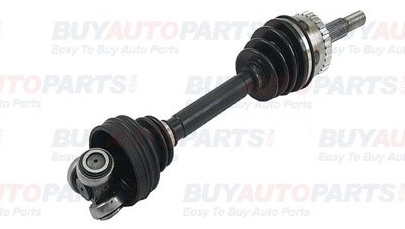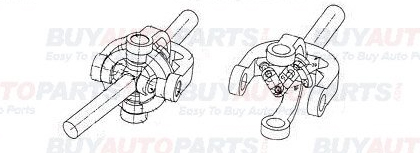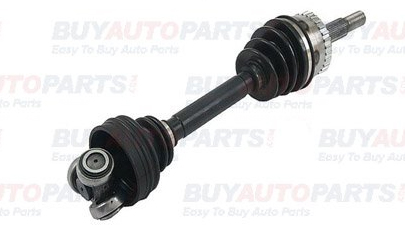Constant-velocity (CV) joints allow the drive shaft to transmit power through a variable angle, at a constant rotational speed, without a considerable increase in friction. The CV joints are also responsible for a smooth transfer of engine power regardless of the turning angle of the steering wheel. The constant-velocity joints are mainly used in front-wheel and all-wheel drive cars. Rear-wheel drive cars with independent rear suspensions typically use CV joints at the ends of the rear-axle half-shafts. Constant-velocity joints are protected by a rubber boot known as the CV gaiter. Each CV joint includes an inner and outer joint.

Early front-wheel drive systems used axles, similar to that of the four-wheel drive vehicles, where a cross-shaped metal pivot was fitted between two forked carriers. These were not CV joints as, except for specific configurations, they resulted in a variation of the transmitted speed. They were simple to make and tremendously strong, and are still used to provide a flexible coupling in some propshafts in which there is not much movement.

SIGN UP
NOW &
GET $10 OFF
ON ORDERS
OVER $100
Don't miss out on our exclusive offers
Get instant savings, exclusive deals, and limited-time promos.
As front wheel drive systems became more popular, with cars such as the Mini using compact transverse engine layouts, the limitations of universal joints in front axles became more obvious. Based on a design by Alfred H. Rzeppa, constant velocity joints solved a lot of these problems. They allowed a smooth transfer of power despite the wide range of angles through which they were bent.
Generally, the CV joint can last for a long time, provided it is maintained properly. A malfunctioning CV joint will result in a drop in engine power being transmitted to the vehicle. There are a few causes and symptoms of failing CV joints.
Symptoms of a Damaged Brake Caliper
One of the most common problems in a CV joint is cracked or split boots. This allows moisture and debris to enter, thereby subjecting the joint to corrosion.
By replacing a damaged boot at the earliest, you can protect the CV joint from corrosion. While replacing the boot, make sure that the CV joint area is cleaned and greased.
Signs of a Damaged CV Joint
- Grease filled around the CV joint can seep out of them when the rubber boots are cracked or broken. Over time, the grease can spread out to the area inside the wheel rim.
- A clicking or popping noise, which gets louder while accelerating is an audible symptom of a damaged outer CV joint.
- A humming or growling noise is emitted due to a lack of lubrication in the CV joint. A steady knocking while driving at low speeds is also an indication of a bad CV joint.
- Difficulty in steering especially while rounding a corner or making turns may also be due to a faulty CV joint.
- When your vehicle shudders while accelerating, it indicates a fault in the inner CV joints.
In worst cases, a worn-out CV joint may lose connection with the other parts, making the vehicle inoperable.
Maintenance
Inspecting the CV joint is a part of your automobile's regular maintenance. Check for any breaks or cracks in the boot. If you find any such signs, check the CV joint as well. If the joint is fine, get the boot alone replaced and fill the right amount of grease.


